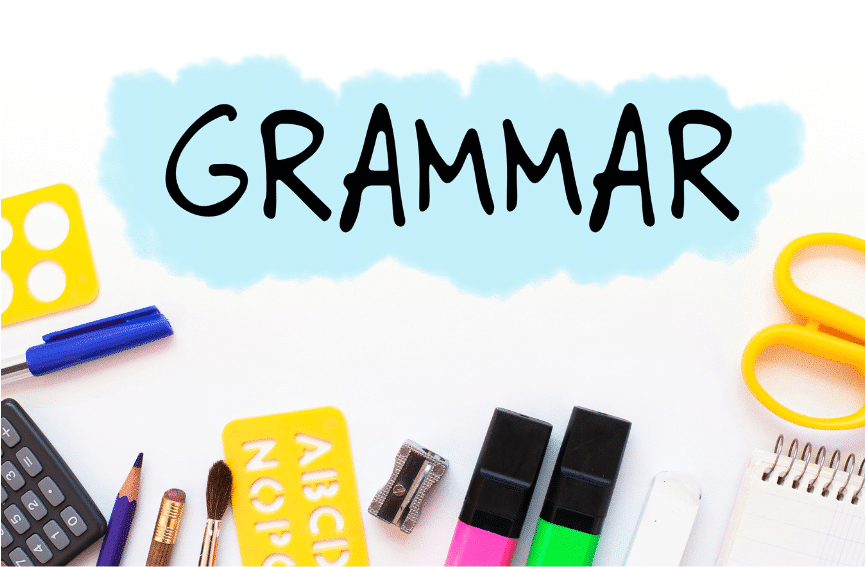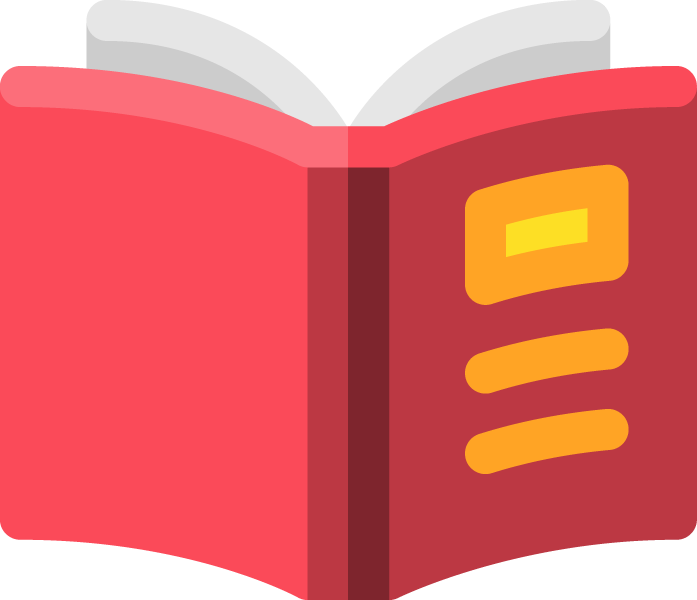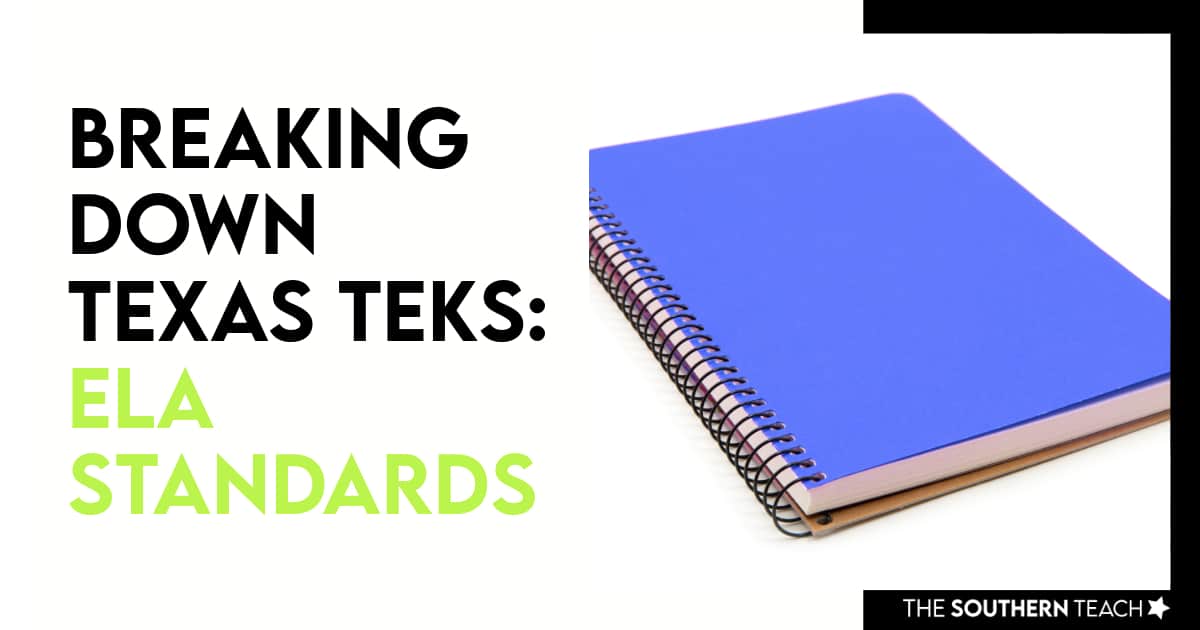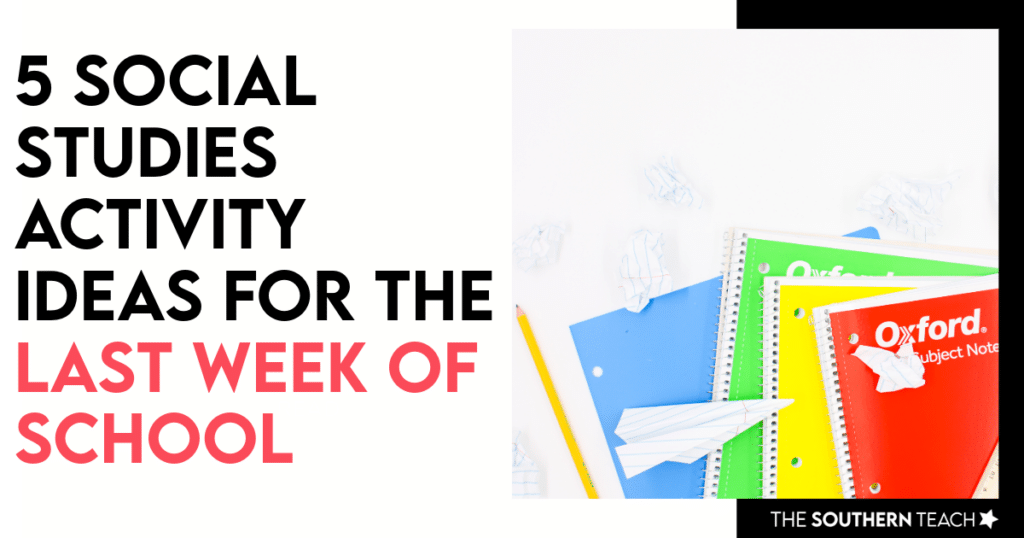Breaking Down TEKS Texas ELA Standards
By Kirsten Hammond
Share This Post:
The TEKS Texas ELA standards has a lot of important components to understand. In this blog post, I will be breaking down the meaning of the Texas Essential Knowledge and Skills (known as TEKS) for Grades 3-5!
When was the TEKS Texas ELA standards implemented?
The streamlined ELAR TEKS for kindergarten-grade 5 were adopted in 2017, were effective in August 2019, and were implemented in classrooms beginning with the 2019-2020 school year.

Introduction of the TEKS English Language Arts (ELAR) Standards
Here are some main things to know about the TEKS standards:
- Texas ELAR Standards connects reading, writing, listening, speaking, and thinking through 7 integrated strands.
- The 7 ELAR strands are supposed to connect to reading, writing, listening, and speaking to build academic and social language proficiency. Each strand is of equal value, may be presented in any order, and should be integrated throughout the year.
- Encoding (spelling) and decoding (reading) are reciprocal skills.
- As students progress through each grade level, the text complexity increases with challenging vocabulary, sentence structures, text features, cognitively stimulating content, and inferential relationships between ideas.

What are the 7 Strands of the TEKS English Language Arts (ELAR) Standards
The TEKS English Language Arts standards are built around seven key ELAR strands that students work through from kindergarten all the way to high school. Here’s a quick breakdown of each one and why they matter in the classroom:
1. Developing and Sustaining Foundational Language Skills
This strand covers the building blocks of language—oral language, spelling patterns, vocabulary, fluency, and self-sustained reading. These skills set the stage for confident readers and writers.
2. Comprehension Skills
Comprehension goes beyond just reading words—it’s about listening, speaking, reading, and writing with purpose. Students use strategies like making inferences, making connections, and predicting outcomes to strengthen their understanding of a text.
3. Response Skills
Here, students learn how to engage with texts in a meaningful way—whether it’s through writing, discussions, or personal reflections. They also practice using text evidence to support their ideas.
4. Multiple Genres
From fiction and poetry to informational and argumentative texts, this strand helps students recognize and analyze different types of literature, looking at both the literary elements and unique structures of each genre.
5. Author’s Purpose and Craft
Students take a deep dive into an author’s choices—why they wrote what they did and how their words create meaning. This includes studying the author’s message, point of view, and literary techniques like imagery and figurative language.
6. Composition
Writing is a process, and this strand walks students through it step by step—planning, drafting, revising, editing, and publishing. They also explore different writing styles, from personal narratives and poetry to letters, argumentative pieces, and informational texts.
7. Inquiry and Research
Research skills are key across all subjects, and this strand helps students develop them. They learn how to generate questions, use primary and secondary sources, and gather relevant information to support their findings.
These seven strands work together to help students become strong readers, writers, and critical thinkers—skills they’ll use in every subject (and beyond the classroom, too!).

ELA STAAR Testing
Recently in 2021, the assessed curriculum for the standardized STAAR test in Texas changed to integrate reading and writing. There is no longer a separate writing STAAR test (formerly assessed in 4th grade).
The test includes a reading, revising and editing, and writing composition component. You can learn more on the assessed curriculum here.
What are the differences between 3rd, 4th, and 5th grade ELA curriculum?
While the TEKS Texas ELA strands are the same for all grade levels, the level of complexity increases throughout the grade level. Not all skills are covered in the same way each year. Here’s an example of a skill in the Multiple Genres strand. Notice how it progresses from 3rd grade to 5th grade:
Third Grade
3.9C: discuss elements of drama such as characters, dialogue, setting, and acts;
Fourth Grade
4.9C: explain structure in drama such as character tags, acts, scenes, and stage directions;
Fifth Grade
5.9C: explain structure in drama such as character tags, acts, scenes, and stage directions;
As you can see, students in 3rd grade will discuss or talk about the elements of drama and the meaning of each element. “Such as” indicates that these are a few examples of elements of drama that can be taught to students (characters, dialogue, setting, acts).
In 4th and 5th grade, students will explain the structure in drama. Again, you can see that “such as” refers to examples listed (character tags, acts, scenes, stage directions), but could include more elements of drama that are not specifically listed in the TEKS.
You can find the specific skills for TEKS English Language Arts (K-5) here.
If you’re looking for fun and engaging ways to infuse the ELA TEKS in your upper elementary classroom, check out this blog post on 5 literacy activities for centers or stations!
kirsten hammond
Kirsten is a former 3rd and 5th grade teacher who loves helping upper elementary teachers by creating resources and sharing ideas that are engaging, research-based, and TEKS-aligned. She is a work-from-home mama of 3 rambunctious little ones and loves running, true crime, and lots of coffee.


















